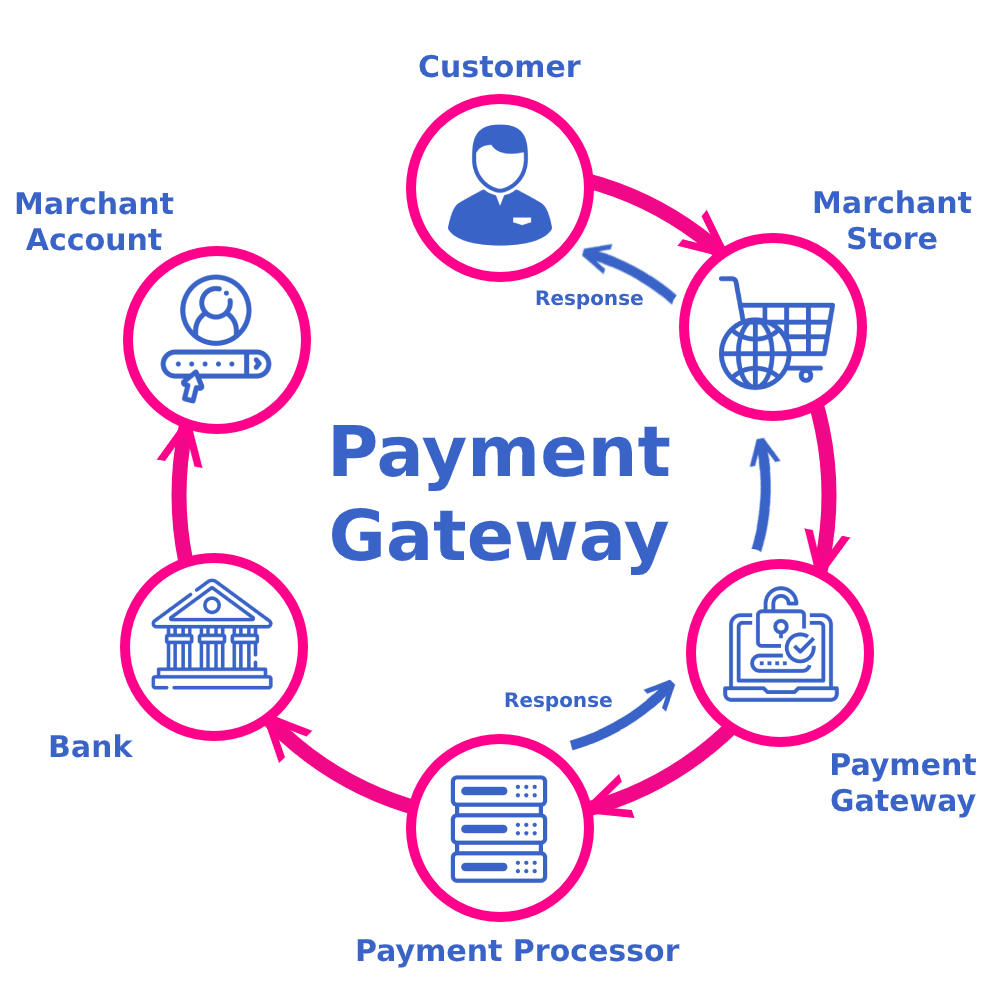A payment gateway is a technology used by merchants to accept debit or credit card purchases from customers. The term includes not only the physical card-reading devices found in brick-and-mortar retail stores but also the payment processing portals found in online stores. However, brick-and-mortar payment gateways in recent years have begun accepting phone-based payments using QR codes or Near Field Communication (NFC) technology.
Payment Gateway Setups
Rapid Boosters to Your Sales.

The payment gateway is a key component of the electronic payment processing system, as it is the front-end technology responsible for sending customer information to the merchant acquiring bank, where the transaction is then processed.
Payment gateway technologies are always evolving to reflect new consumer tastes and technical capacities. In the past, terminals would accept credit cards using magnetic strips and required paper signatures from the customer. With the development of chip technologies, the signature phase could be removed in favor of a personal identification number (PIN) entered directly into the payment gateway hardware. Today, contactless purchases are also available, with many customers now using their phones as a payment device instead of plastic credit cards.
The architecture of a payment gateway will differ depending on whether it is an in-store gateway or an online payment portal. Online payment gateways will require application programming interfaces (APIs) that allow the website in question to communicate with the underlying payment processing network. In-store payment gateways will utilize a POS terminal that connects to the payment processing network electronically using either a phone line or an Internet connection.
